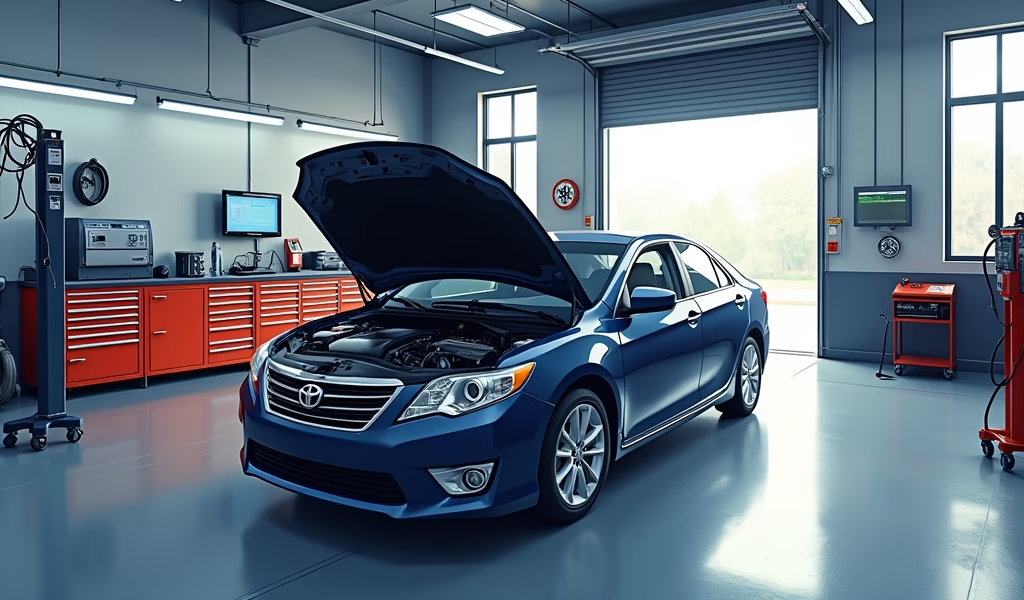Overview
This article outlines five essential care tips for used car owners: master fluid maintenance, prioritize tire health, manage battery life, develop preventative maintenance schedules, and protect interior/exterior surfaces. Proper maintenance allows used vehicles to exceed 200,000 miles while retaining value, with specific guidance on finding reliable models, recognizing warning signs, and implementing regular care routines.
Table of Contents
- Understanding the Used Car Market
- Finding a Reliable Used Car
- Essential Care Tip #1: Master Fluid Maintenance
- Essential Care Tip #2: Prioritize Tire Health
- Essential Care Tip #3: Battery Management
- Essential Care Tip #4: Develop a Preventative Maintenance Schedule
- Essential Care Tip #5: Protect Interior and Exterior
- Conclusion
- Frequently Asked Questions
Understanding the Used Car Market
The best used cars market has transformed dramatically in recent years. What was once considered a compromise has become a smart financial decision for millions of drivers. Since 2020, pre-owned vehicle sales have jumped by nearly 15%, showing how consumer preferences are shifting toward value and practicality.
As a mechanic with over two decades under the hood, I’ve seen firsthand how a properly maintained used car can outperform and outlast newer models that receive minimal care. The secret isn’t necessarily in the vehicle’s age but in how it’s treated after you drive it home.
Modern vehicles are engineered to last longer than their predecessors. With proper maintenance, many models can easily exceed 200,000 miles – a milestone that was once considered exceptional but is now increasingly common. The key is knowing what requires attention and when.
Whether you’re considering your first used car purchase or looking to extend the life of your current vehicle, understanding these essential care principles can save you thousands in unexpected repairs while providing reliable transportation for years to come.
Finding a Reliable Used Car
Before diving into maintenance, let’s address the foundation of a positive ownership experience – starting with the right vehicle. Finding a diamond among the rough requires patience and attention to detail that many buyers rush through.
When shopping for a used car, look beyond cosmetic appeal. Focus on vehicles with comprehensive maintenance records, minimal previous owners, and clean vehicle history reports. These documents tell the real story of how well a car was cared for.
Here are critical warning signs that should make you reconsider a purchase:
- Mismatched paint or panel gaps indicating previous accidents
- Rust, particularly on structural components or the undercarriage
- Uneven tire wear suggesting alignment or suspension issues
- Sweet or burning smells that might indicate fluid leaks
- Blue exhaust smoke pointing to engine oil consumption
Some models consistently demonstrate exceptional reliability in the used market. Toyota Camry, Honda Accord, Mazda3, and Subaru Outback frequently surpass 200,000 miles with proper maintenance. These vehicles aren’t just statistical winners – I’ve personally seen these models in my shop still running strong with odometers approaching 300,000 miles.
Consider using resources like Consumer Reports’ used car buying guide to research model-specific issues. Remember that even the most reliable models can become nightmares if previous owners neglected basic maintenance.
I strongly recommend having any potential purchase inspected by a trusted mechanic before finalizing the deal. The comprehensive used car inspection checklist can help identify hidden issues that might not be apparent during a test drive but could become expensive repairs later.

Essential Care Tip #1: Master Fluid Maintenance
Your used car’s longevity depends largely on what flows through it. Think of automotive fluids as the lifeblood of your vehicle – each serving critical functions that can’t be overlooked.
Engine oil tops the priority list. For most used vehicles, I recommend checking levels monthly and changing oil every 5,000 miles with full-synthetic or 3,000 miles with conventional oil. Dark, gritty oil or a persistent oil pressure warning light demands immediate attention. Your engine’s internal components experience metal-on-metal contact with inadequate lubrication, potentially causing catastrophic damage within minutes.
Coolant prevents your engine from cooking itself. Check levels quarterly and flush the system every 30,000-50,000 miles. The cooling system operates under pressure and extreme temperatures, making it particularly vulnerable in aging vehicles. A sweet smell from the engine area or fluctuating temperature readings are early warning signs of cooling system issues.
Transmission fluid often gets neglected until problems arise. For automatic transmissions in used vehicles, I suggest checking fluid levels twice yearly and changing fluid every 30,000-60,000 miles – more frequently if you tow or drive in stop-and-go traffic. Manual transmission fluid generally lasts longer but should still be changed every 60,000-90,000 miles.
Brake fluid is literally a matter of safety. This hygroscopic fluid absorbs moisture from the air over time, lowering its boiling point and compromising braking performance. Check levels with every oil change and flush the system every 2-3 years regardless of mileage. Spongy brake pedal feel or decreased stopping power should never be ignored.
Power steering and differential fluids complete the maintenance picture for most vehicles. These “set and forget” fluids are often overlooked entirely but should be replaced according to your vehicle’s specific intervals – typically every 30,000-60,000 miles for power steering and 30,000-100,000 miles for differential fluid.
While basic fluid checks can be DIY projects, I’ve seen too many well-intentioned owners create expensive problems through improper maintenance. When in doubt, consult a professional, particularly for transmission and differential services that require specific procedures and equipment.
Essential Care Tip #2: Prioritize Tire Health
Your tires represent the only points of contact between your vehicle and the road. This critical connection affects everything from fuel economy to handling and safety, yet tires are frequently the most neglected components on used cars.
Maintaining proper tire pressure is the simplest yet most impactful tire care practice. Check pressure monthly and before long trips using a quality gauge – the recommended pressure can usually be found on a sticker inside the driver’s door jamb. Underinflated tires flex excessively, creating heat that breaks down internal components and increases fuel consumption. Overinflated tires reduce traction and wear unevenly.
Rotation is equally important. Most vehicles should have tires rotated every 5,000-7,500 miles to ensure even wear patterns. Front tires typically experience different wear than rear tires due to steering forces and weight distribution. Without rotation, you’ll replace tires much sooner than necessary.
For used vehicles, tire age matters as much as tread depth. Rubber compounds deteriorate over time regardless of use. As a general rule, replace tires that are more than six years old, even if they have adequate tread remaining. You can determine manufacturing date by checking the DOT code on the sidewall – the last four digits indicate the week and year of manufacture.
Alignment should be checked annually or whenever you notice pulling to one side, steering wheel vibration, or uneven tire wear. Proper alignment ensures that your tires contact the road at the optimal angle, maximizing both performance and longevity. This relatively inexpensive service can double tire life in some cases.
If you live in an area with distinct seasons, consider dedicated winter tires for cold-weather months. According to tire testing data, winter tires provide significantly better traction than all-season options when temperatures drop below 45°F – even on dry pavement. The investment in a second set of tires can prevent accidents and extend the life of your primary set.
Essential Care Tip #3: Battery Management
Battery failure remains one of the leading causes of roadside assistance calls, yet proper battery maintenance is simple and inexpensive. Used car batteries often carry hidden wear that leads to unexpected failures, typically on the coldest morning of winter or during your most important appointment.
Most automotive batteries last between 3-5 years, though this lifespan shortens considerably in extreme climates. When purchasing a used vehicle, check the battery manufacturing date and plan to replace batteries approaching the four-year mark. This proactive approach costs the same as an emergency replacement but saves the inconvenience and potential safety issues of being stranded.
Watch for these warning signs of battery deterioration:
- Engine cranks slowly during startup
- Headlights dim noticeably at idle
- Electronic systems reset unexpectedly
- Battery warning light illumination
- Swollen battery case or corrosion on terminals
Simple maintenance can significantly extend battery life. Keep terminals clean using a mixture of baking soda and water, ensure connections remain tight, and consider a trickle charger for vehicles that sit unused for extended periods. These basic steps improve starting performance and prevent premature failure.
When replacement becomes necessary, don’t automatically choose the cheapest option. Consider your climate, driving habits, and vehicle’s electrical demands. Modern vehicles with numerous electronic systems often benefit from absorbed glass mat (AGM) batteries, which offer better performance and longevity despite their higher initial cost.
If you’re mechanically inclined, battery replacement is usually straightforward. However, many newer vehicles require a computer reset after battery replacement to ensure proper function of electronic systems. Research suggests having your battery tested annually after it reaches three years of service to avoid unexpected failures.

Essential Care Tip #4: Develop a Preventative Maintenance Schedule
The difference between a used car that becomes a money pit and one that provides years of reliable service often comes down to preventative maintenance. Developing a comprehensive maintenance schedule transforms reactive emergency repairs into planned, manageable care.
For used vehicles, I recommend creating a custom maintenance calendar based on both mileage and time intervals. Your vehicle’s owner’s manual provides the baseline recommendations, but used car owners should consider accelerating certain service intervals, especially if maintenance history is spotty.
Key maintenance milestones to track include:
- Oil and filter changes (every 3,000-7,500 miles)
- Tire rotation (every 5,000-7,500 miles)
- Air filter replacement (every 15,000-30,000 miles)
- Spark plug replacement (every 30,000-100,000 miles, depending on type)
- Timing belt replacement (typically every 60,000-100,000 miles for vehicles so equipped)
- Brake pad replacement (every 30,000-70,000 miles, depending on driving conditions)
- Suspension inspection (annually or at 15,000-mile intervals)
Budget for regular maintenance to prevent financial strain when services come due. I advise setting aside approximately $75-100 monthly in a dedicated “car care fund” to cover routine maintenance and anticipated repairs. This approach turns large, unexpected expenses into manageable, planned maintenance.
Meticulous record-keeping proves invaluable for both tracking maintenance and preserving resale value. Digital maintenance tracking apps or a simple notebook in your glove compartment can serve as your vehicle’s medical record, documenting every service, repair, and modification. These records will not only remind you of upcoming maintenance but will also demonstrate your vehicle’s care to future buyers.
Establish a relationship with a trustworthy mechanic who specializes in your vehicle’s make. A good mechanic becomes a partner in maintaining your vehicle, often identifying potential issues before they become expensive problems. Regular visits for scheduled maintenance allow your mechanic to become familiar with your specific vehicle’s condition and needs.
Essential Care Tip #5: Protect Interior and Exterior
While mechanical maintenance keeps your used car running, protecting its appearance preserves both pride of ownership and resale value. Used cars often show cosmetic wear that, if left unaddressed, accelerates deterioration and creates a negative ownership experience.
Exterior paint protection begins with regular washing to remove contaminants. Road salt, tree sap, bird droppings, and industrial fallout all contain compounds that damage clear coat and underlying paint. Wash your vehicle biweekly and immediately after exposure to these contaminants.
Apply a quality wax or sealant every three months to provide a protective barrier against environmental damage. For used cars with fading or oxidation, consider a professional paint correction service to restore luster before applying protection. This one-time investment dramatically improves appearance and makes ongoing maintenance easier.
Interior protection requires different strategies depending on your vehicle’s materials. For leather surfaces, clean and condition quarterly to prevent cracking and premature aging. Fabric upholstery benefits from annual professional cleaning and fabric protectant application. UV protectants on dash and door panels prevent fading and cracking, especially in vehicles regularly parked outdoors.
Climate-specific considerations should influence your protection strategy:
- Coastal areas: Rinse undercarriage monthly to prevent salt-induced corrosion
- Winter climates: Apply undercoating before winter to protect against road salt
- Hot, sunny regions: Use window tinting and UV protectants for interior surfaces
- High humidity areas: Use moisture absorbers and regular ventilation to prevent mold
Quality floor mats represent one of the best protective investments for any used vehicle. Weather-resistant mats capture dirt, moisture, and debris that would otherwise stain and damage carpeting. Similarly, seat covers for vehicles with fabric upholstery prevent wear and staining on high-touch surfaces.
Addressing small issues promptly prevents them from becoming major problems. Repair rock chips in windshields before they spread into cracks requiring full replacement. Touch up paint scratches before they allow moisture to reach metal surfaces and create rust. These minor repairs cost little but prevent significant damage and depreciation.
Conclusion
A well-maintained used car isn’t just transportation – it’s a smart financial decision and potentially a reliable companion for hundreds of thousands of miles. These five essential care principles – fluid maintenance, tire care, battery management, preventative scheduling, and appearance protection – form a comprehensive approach that maximizes both value and reliability.
The long-term benefits extend beyond avoiding breakdowns. Properly maintained vehicles retain higher resale value, consume less fuel, produce fewer emissions, and provide greater safety for you and your passengers. Each hour spent on maintenance pays dividends in both performance and peace of mind.
Remember that maintenance isn’t just about following schedules – it’s about developing awareness of your vehicle’s condition. Pay attention to new noises, vibrations, smells, or performance changes. These early warning signs, when addressed promptly, often prevent major failures and keep repair costs manageable.
Whether you’ve purchased the best used car you could find or are working to maximize the life of your current vehicle, these principles apply equally. With proper care, today’s quality used vehicles can provide reliable transportation well beyond 200,000 miles – turning what many consider a temporary solution into a long-term automotive relationship.
Frequently Asked Questions
What are the most reliable used car brands?
Toyota, Honda, Mazda, and Subaru consistently rank among the most reliable used car brands. These manufacturers have established reputations for building vehicles that regularly exceed 200,000 miles with proper maintenance.
How many miles is too many when buying a used car?
Rather than focusing solely on mileage, evaluate maintenance history and overall condition. A well-maintained vehicle with 120,000 miles often proves more reliable than a neglected one with 60,000 miles.
What’s the best age for a used car purchase?
Three-to-five-year-old vehicles often provide the best balance of value, reliability, and modern features. These vehicles have experienced their steepest depreciation while typically offering significant remaining useful life.
Should I buy an extended warranty for my used car?
Extended warranties make sense for luxury vehicles with expensive repair costs or vehicles with questionable reliability records. For most reliable models, the money is better invested in a maintenance fund.
How can I check a used car’s history before buying?
Use services like Carfax or AutoCheck to review accident history, title status, and service records. Additionally, have any potential purchase inspected by a trusted mechanic before finalizing the deal.


Pingback: Reliable Used Cars: 7 Proven Care Tips - knowsyourcar.com
Pingback: Whats the best family car these days? - knowsyourcar.com
Pingback: What is the best used car to buy? 7 Tips - knowsyourcar.com